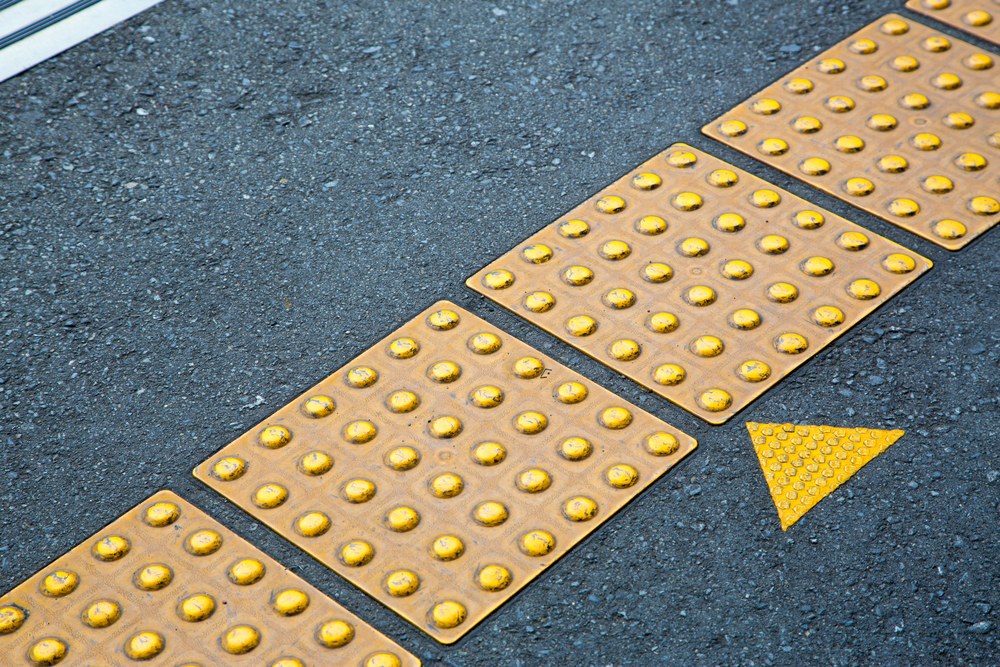
What's the Difference Between Cast-in-Place and Surface-Applied Dome-Tiles?
Cities and businesses are scrutinizing pedestrian walkways to determine how to best increase the ADA compliance of public spaces. ADA compliant sidewalks make businesses and public areas more accessible to individuals with disabilities. A key component of an ADA compliant sidewalk is the truncated dome tiles that warn pedestrians of a change in the sidewalk, whether an intersection or a ramp.
These truncated dome tiles have two common ways of being installed: cast-in-place or surface-applied.
Cast-in-Place Tiles
For the most part, cast-in-place tiles are used in new construction. The installation occurs while the cast-in-place tiles are set into a bed of fresh concrete. This type of installation makes the tiles durable and ideally, a permanent part of the sidewalk.
To make the domes a permanent part of the sidewalk, the cast-in-place tiles need to be made either of nano-engineered polymer concrete or of iron/steel. All other composite materials will not resist heavy traffic conditions over time and therefore will likely incur regular replacements.
Cast-in-Place Tiles are installed in all the following areas required to be ADA compliant:
- Curb Ramps
- Intersection Crossings
- Parking Lots
- Stair Landings
- Wheelchair Ramps
- Transportation Platforms
Surface-Applied Tiles
As the name indicates, the surface-applied dome-tiles are installed on top of the surface of the walking path. For these pre-existing areas that are not ADA-compliant, surface-applied tiles can be added to existing concrete. While these tiles are made of thinner material than cast-in-place tiles, they’re still ADA compliant regarding dome-dimensions and configurations.
Simply put, surface-applied tiles are like giant mats that are fastened to an already existing walking-surface, most likely concrete. Surface-applied tiles are also used in locations where there are space constraints in the depth of the concrete substrate such as in multi-level parking lots. A concrete substrate is often populated with electrical, plumbing, rebar and wire mesh which eliminates the use of cast-in-place tiles.
Surface-applied tiles are often used in areas that are not yet ADA compliant, meaning that the sidewalk or surface already exists but does not have ADA tiles. Cast-in-place tiles are associated with new construction. Therefore, these tiles both fulfill different needs in making public areas compliant with the ADA.
When choosing the best solution to make your walkways accessible to everyone, consider what you want when it comes to product dimensions and application. Talk with one of our industry experts to determine what would be best for your situation by calling (866) 439-3216.


